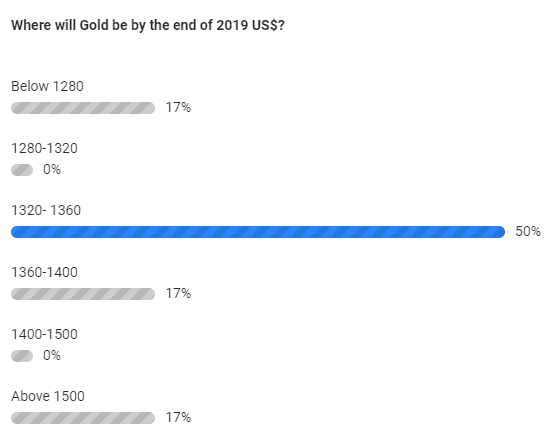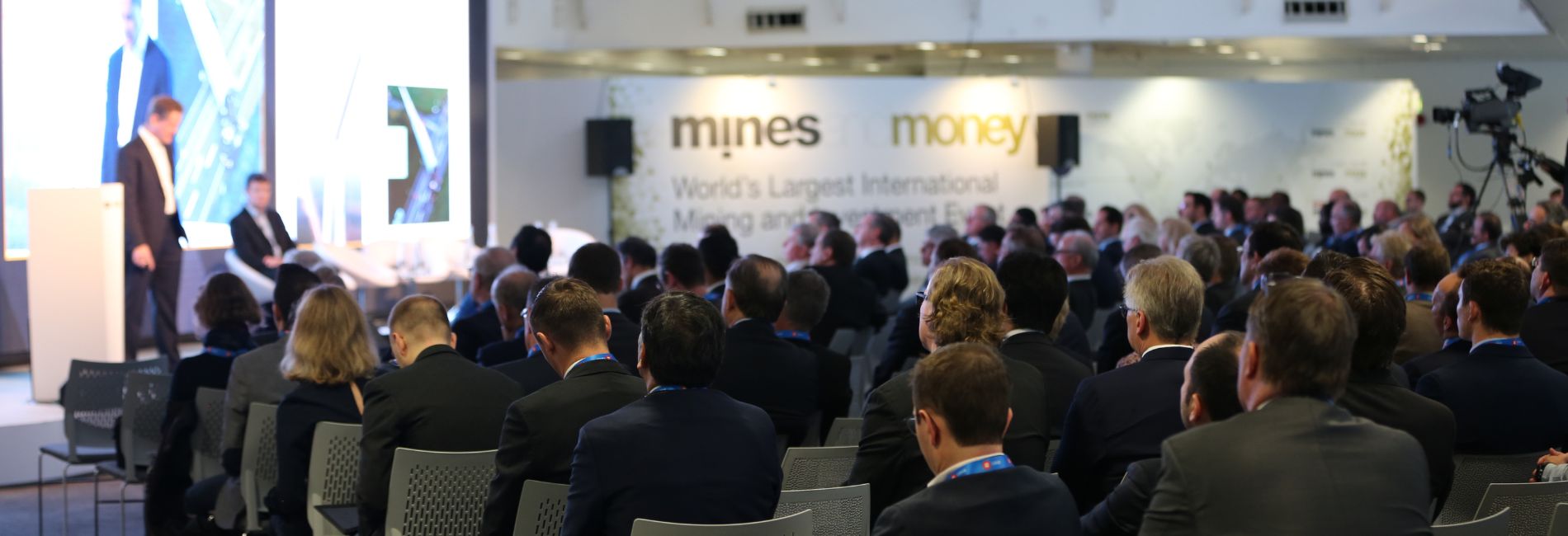This is the first of five articles on the forecasts, and opinions, from Mining Beacon's 5,000 registered delegates at its eight conferences during 2019 in Hong Kong, New York, Helsinki, Vancouver, Brisbane, Melbourne and two in London.
Mining Beacon regularly polls the views of delegates at its conferences, and because of their level of seniority and expertise (not least from regularly attending expert presentations) these opinions have significant value.
The polled delegate opinions have been divided into five categories: commodities, countries, companies, technology and mining generally. In this first summary, we look at the poll results on questions related to commodity prices and trends.
Precious Polling
Gold is a perennial favourite at mining events, and was the first poll question at Mines and Money Asia in Hong Kong during April 2019. Delegates were asked for their opinion on the gold price for a year later (i.e. April 2020), and all of those polled agreed that it would be over US$1,400/oz (which seems highly likely to be correct).
Gold also scored well in a poll at Mines and Money New York in May 2019 of the "precious metal you are the most bullish about in 2019", registering 43%, with the same percentage going for PGMs and only 14% opting for silver. Just 17% of the delegates were able to predict the end-2019 gold price (of around US$1,500/oz), with fully 50% going for a range of only US$1,320-1,360/oz.

The International Mining and Resources Conference (IMARC) in Melbourne during October 2019 had 1,500 registered delegates at the conference amongst 7,000 event attendees. Respondees to a poll on the commodity with the 'top projects' over the previous 12 months voted overwhelmingly (59%) for gold, with nickel and copper being significantly behind on around 15% each.
The IMARC delegates voted 2:1 in favour of gold over silver as a precious metal investment, 3:1 for nickel over cobalt as a battery metal investment, and more than 4:1 for copper over zinc as an industrial metal investment.
The Takeaway: Gold soared in the middle three months of 2019, rising from US$1,300/oz at the start of June to over US$1,500/oz at the beginning of September, having been trading at barely US$1,200/oz in October 2018. It is little wonder that delegates almost universally (and correctly) forecast its continued rise into 2020, and the consensus amongst analysts is that the precious metal will not peak until 2021.
Spark for Battery Metals
The market for electric vehicles (EVs) is, of course, crucial to the performance of battery metals, and so was also a regular topic at last year's Mining Beacon events.
Delegates at Mines and Money New York were asked about the percentage of new vehicles would be electric by 2030, with half saying over 30%. Only 38% of Mines and Money London delegates voted for over 30% of new vehicles being electric within ten years, with a further 38% saying it would be 10-30%.

When asked if they would buy an electric car, 46% of IMARC delegates said "yes" (although none already had one), with a further 49% saying "maybe". Only 6% said "never".
Delegates at Energy Mines and Money in Brisbane during June 2019 were asked for their view of the "hottest battery metals". Over 30% of the respondees opted for lithium, although copper, cobalt and vanadium also scored well. In contrast, when asked which battery metal they were most bullish about, half of the Mines and Money New York voters went instead for nickel, although copper also scored well. Unlike the Brisbane voters, New York voters ranked lithium and graphite as the battery metals about which they were least bullish.
At Mines and Money London, half of the delegates opted for copper as the most attractive battery metal over the next three years, with a further 25% selecting lithium, and votes also going to nickel and graphite.
Discussions about lithium were a regular theme at Mining Beacon's conferences last year. However, despite a series of expert presentations, delegates at Mines and Money Asia were uncertain about the market, with 40% saying they thought it was oversupplied, 33% that it was not oversupplied and 27% unsure.
Indeed, delegates at several of the conferences were undecided, overall, on the commodities they felt most bullish about. For example, votes at Mines and Money Asia went to eight different metals, and delegates at Energy Mines and Money were split between gold, uranium and lithium.
There was also uncertainty among delegates about markets generally, although politics and the global economy featured regularly at the Mining Beacon events in 2019. Delegates seemed divided about whether Donald Trump will get a second term as US President, for example, and there was also disagreement over the benefit of President Trump to the mining sector. None of the Energy Mines and Money delegates voted that he was "good" or "excellent" for the Australian sector, with 50% voting that the Trump Presidency was "average", 17% "poor" and 33% rating his tenure as "bad" for Australian mining.
The Takeaway: In the event, sales of EVs were very disappointing in China last year (demand stalled after the government halved subsidies in mid-2019). Demand in Europe, however, has continued to meet expectations, and it seems highly likely that there will be a supply shortfall for most battery metals by about 2025. It remains uncertain, however, which of the commodities will see the steepest price rise.
Do you agree with the opinion of our delegates in 2019? Comment below to let us know what you think about the polling results.








